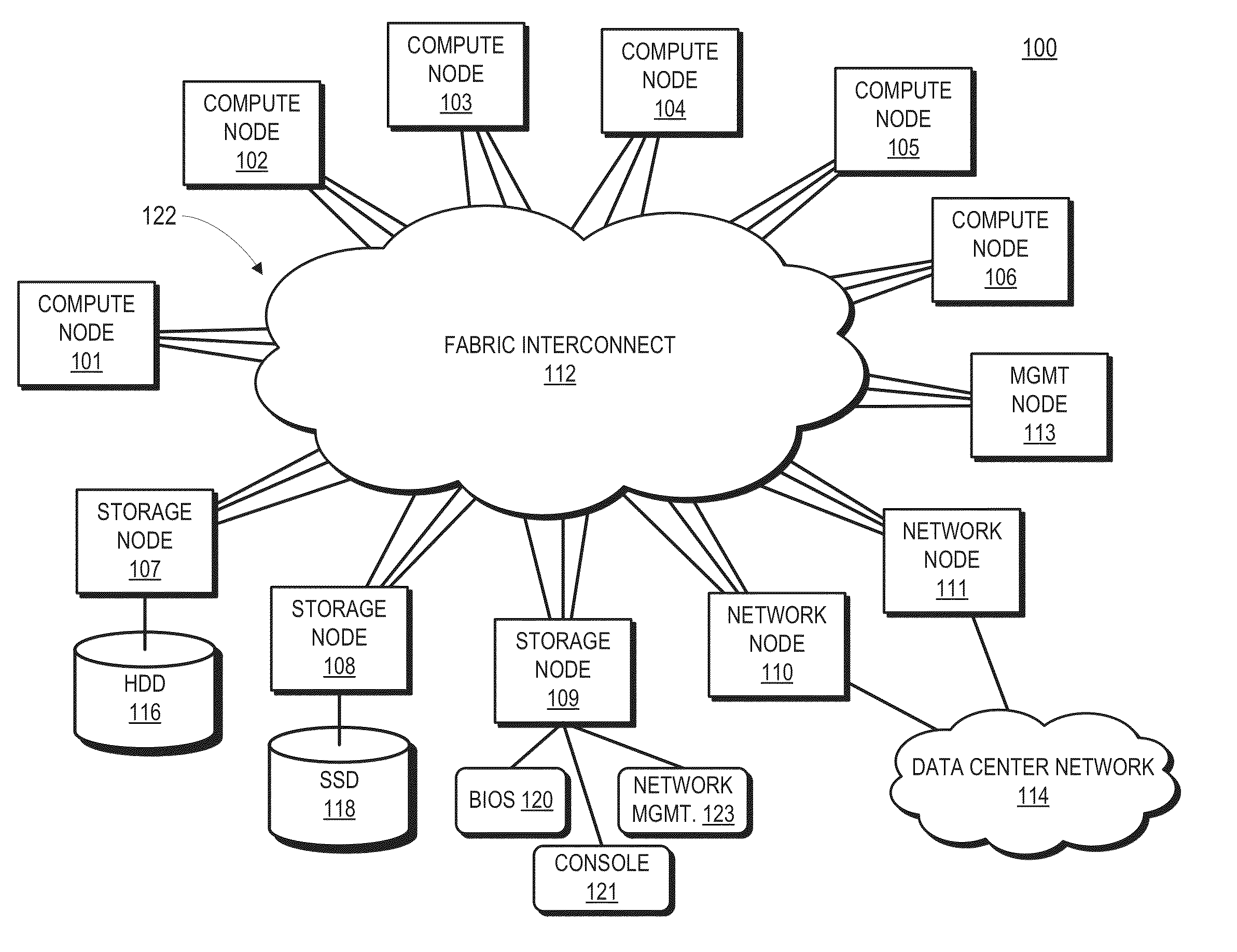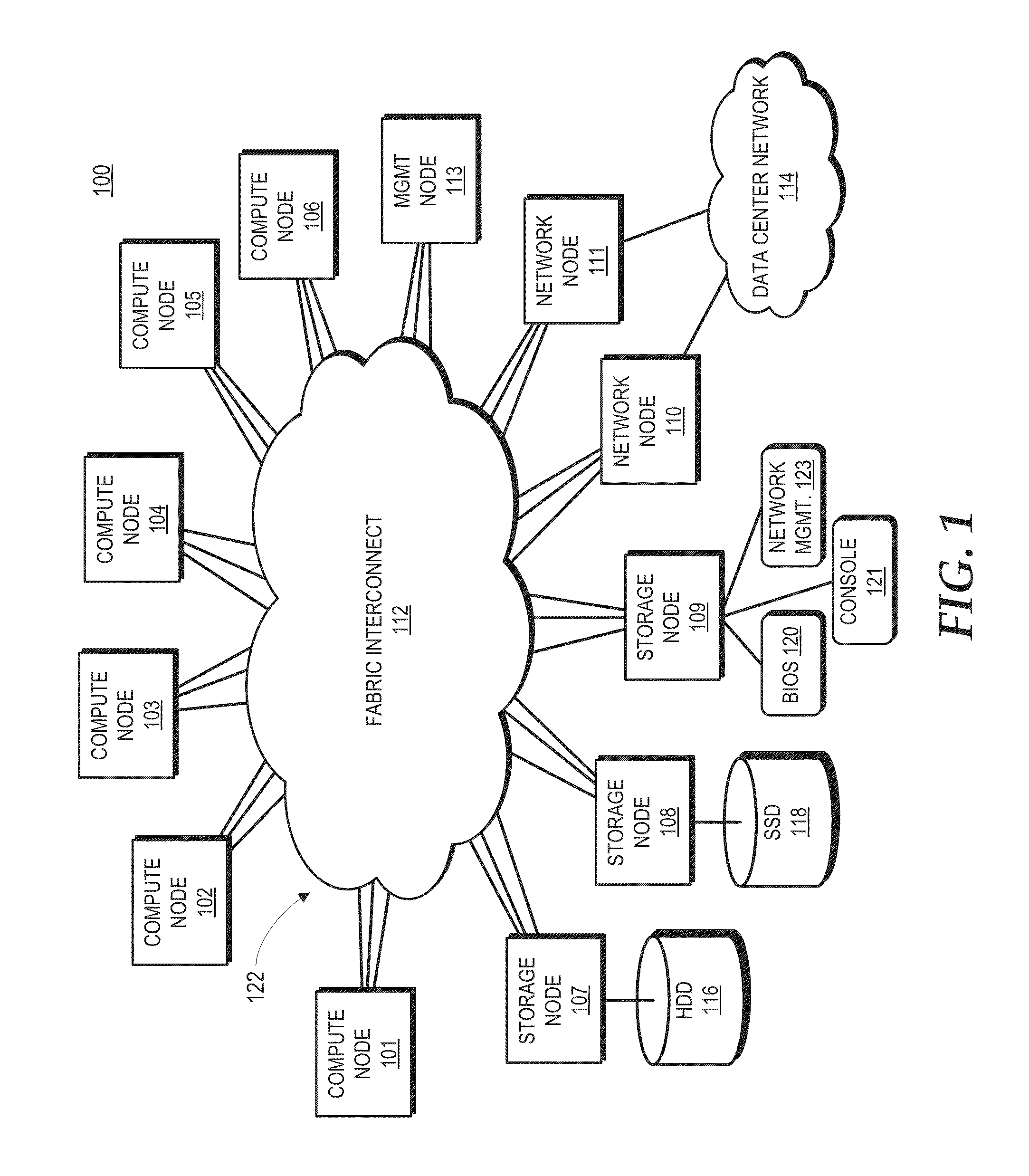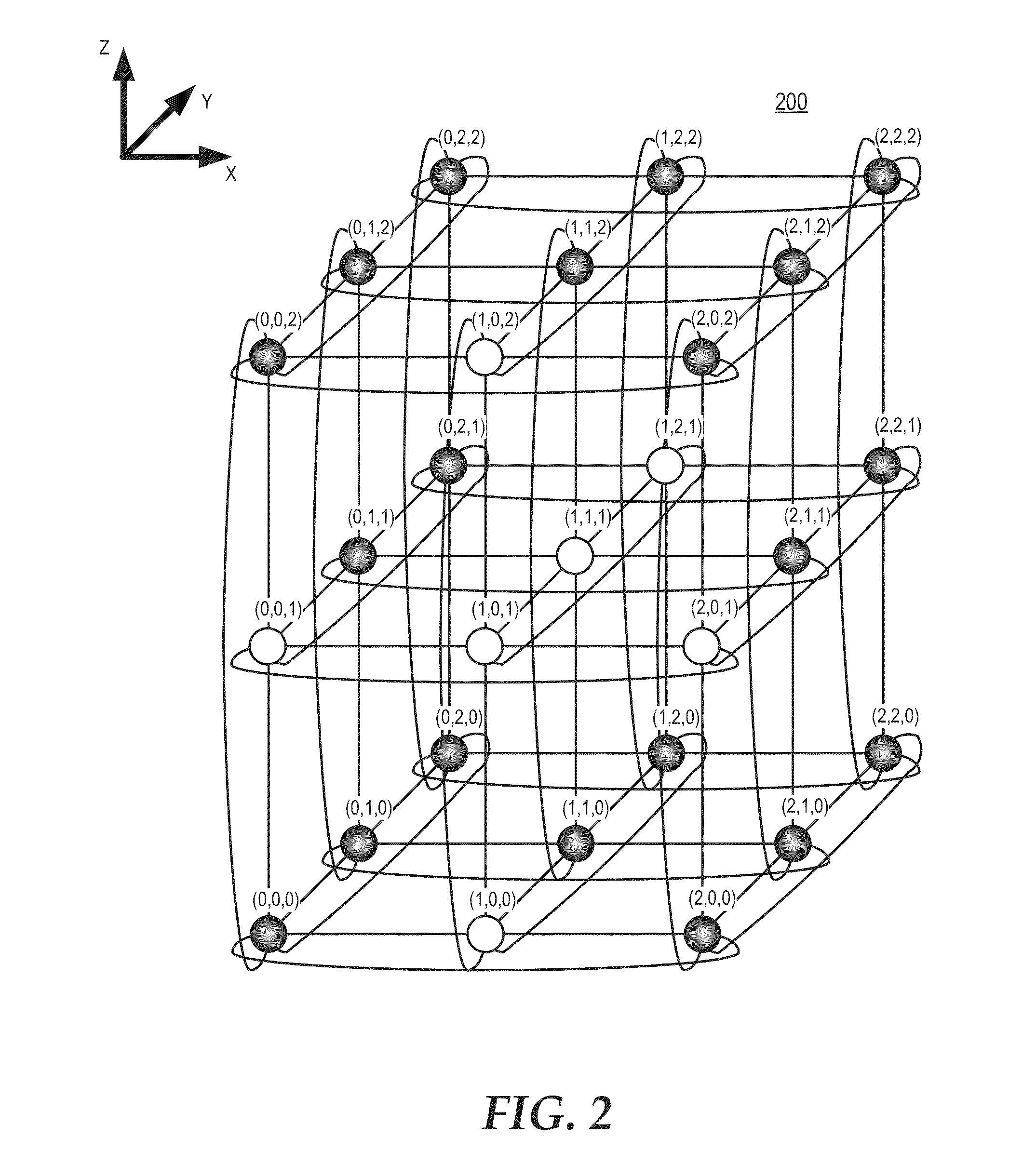Distributed packet switching in a source routed cluster server
a cluster server and packet switching technology, applied in the field of processing systems, can solve the problems of device failure, latency and bandwidth bottleneck, and limit the scalability of such networks
- Summary
- Abstract
- Description
- Claims
- Application Information
AI Technical Summary
Benefits of technology
Problems solved by technology
Method used
Image
Examples
Embodiment Construction
[0016]FIGS. 1-10 illustrate a cluster compute server employing distributed packet switching in a fabric that interconnects nodes in a mesh network topology. In some embodiments, the fabric is a source routed fabric such that packets are routed over the fabric using deterministic routing paths. To illustrate, the mesh network topology can comprise a three-dimensional (3D) torus topology, and packets are routed over the fabric using a strict deterministic dimensional-order routing (that is, packets traverse completely in one dimension on the routing path between source node and destination node before moving to another dimension in the 3D torus). The location of each node in the mesh network topology is represented by a location identifier that also serves as a source routing control that specifies the source routed path between the source node and the destination node. The location identifiers can be implemented as, for example, media access control (MAC) addresses or other types of ...
PUM
 Login to View More
Login to View More Abstract
Description
Claims
Application Information
 Login to View More
Login to View More - R&D
- Intellectual Property
- Life Sciences
- Materials
- Tech Scout
- Unparalleled Data Quality
- Higher Quality Content
- 60% Fewer Hallucinations
Browse by: Latest US Patents, China's latest patents, Technical Efficacy Thesaurus, Application Domain, Technology Topic, Popular Technical Reports.
© 2025 PatSnap. All rights reserved.Legal|Privacy policy|Modern Slavery Act Transparency Statement|Sitemap|About US| Contact US: help@patsnap.com



